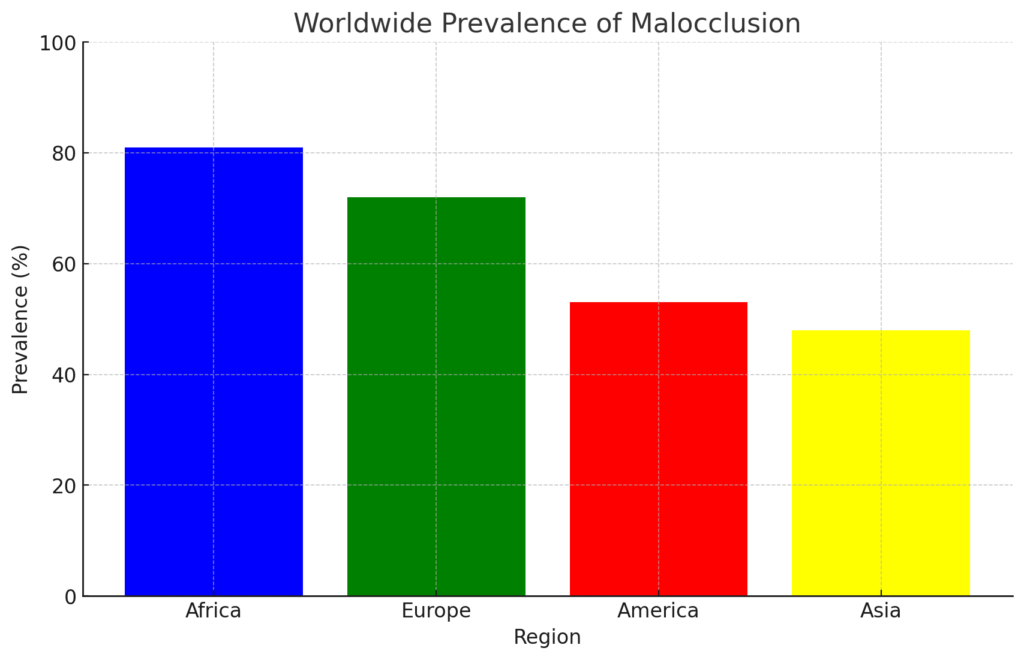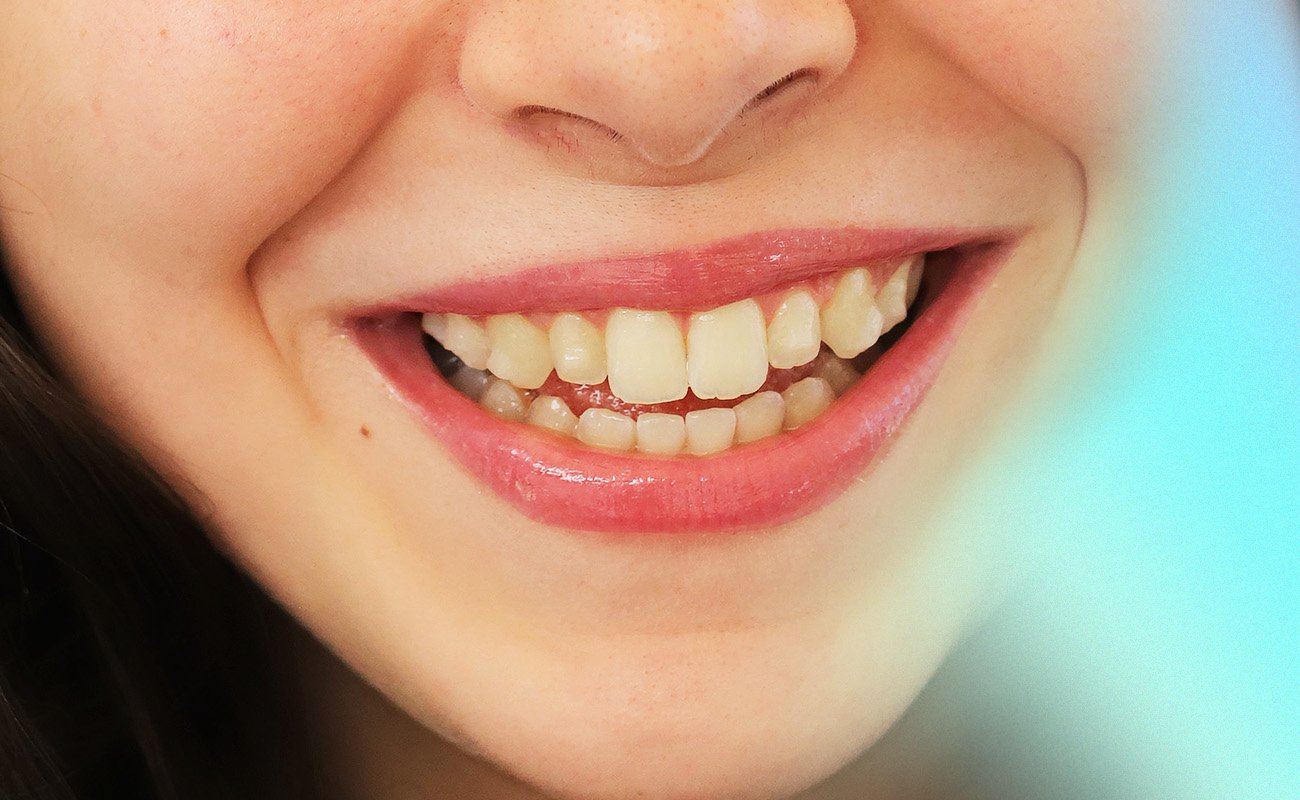An overjet is a type of malocclusion, in which the upper teeth protrude outwards and overlap the lower teeth horizontally. It is sometimes called an overbite, but the correct term used by orthodontists is overjet. Having front teeth that stick out further than normal, known as overjet or buck teeth, can affect chewing function and speech while also posing self-esteem issues. In this article, we will examine the causes of excessive overjet, including genetic predisposition, thumb sucking, and improper tongue position.
We’ll discuss the potential consequences of leaving overjet untreated, like strain on the jaw joint and chipped front teeth. We’ll explore the various orthodontic solutions available to correct increased overjet and realign the front teeth, including braces, aligners, and retainers. We’ll also compare overjet versus overbite to understand the distinction between these two common malocclusions requiring orthodontic intervention for best results.
Overjet vs Overbite
Overbite and overjet are distinct dental conditions related to teeth alignment. An overbite is when the upper front teeth cover the lower front teeth vertically, a common alignment concern. In contrast, an overjet, sometimes called “buck teeth,” is defined by the horizontal position of the upper front teeth extending beyond the lower front teeth. The primary differences between overjet and overbite are:
- Alignment Direction: Overbites involve a vertical overlap, whereas overjets are about the horizontal position of the upper teeth relative to the lower teeth.
- Measurement Method: Overbites are often expressed in percentages, indicating how much of the upper teeth cover the lower teeth. In contrast, overjets are measured in millimeters, showing the horizontal distance between the upper and lower teeth.

Causes of Overjet
Overjet can develop due to various factors, such as:
- Genetic predisposition: Overjet can be influenced by inherited genes that determine the alignment and structure of teeth.
- Thumb-sucking: This childhood habit exerts pressure on the upper front teeth, pushing them forward and contributing to overjet.
- Prolonged Use of Pacifiers: Extended pacifier use during early childhood can have a similar effect as thumb-sucking, pushing the upper front teeth outward.
- Prolonged bottle-feeding: Prolonged bottle-feeding during early years can place pressure on the front teeth, leading to their forward movement.
- Tongue-thrusting while swallowing: This occurs when the tongue pushes against the front teeth during swallowing, which can force the upper front teeth outward over time.
- Mouth breathing: Consistent mouth breathing, often due to nasal congestion or allergies, can change the tongue’s position and lead to dental misalignment, including overjet.
See also: Underbite Vs Overbite: Causes, Effects, and Treatments
Consequences of Untreated Overjet
- TMJ Pain: Untreated overjets can lead to painful temporomandibular joint (TMJ) issues, as the lower jaw may rest unnaturally and cause discomfort. This can develop into lockjaw if left untreated.
- Inability to Close Lips: Individuals with severe overjets might have difficulty fully closing their lips, leading to mouth-breathing and potential issues with oral hygiene.
- Chipping and Breaking of Teeth: Overjets increase the risk of chipping or breaking the protruding teeth, as they are more exposed to accidents and trauma.
- Problems with Sleeping: Untreated overjets may cause problems with sleeping, including snoring and even sleep apnea, as the mouth’s natural resting position could be disrupted.
- Speech Issues: Overjets can result in speech problems, such as lisping and other articulation difficulties since the positioning of the teeth affects how sounds are formed.
- Difficulty Chewing and Biting: The abnormal tooth alignment in overjets can cause problems with biting and chewing food, potentially leading to nutritional concerns.
- Pain While Eating: Due to misaligned teeth, individuals with untreated overjets may experience pain or discomfort while eating.
- Increased Risk of Tooth Decay and Gum Disease: Protruding teeth in an overjet are more susceptible to decay, as they are harder to clean. Furthermore, the risk of gum disease increases due to the misalignment.
- Aesthetic Issues: Lastly, untreated overjets can cause aesthetic concerns, impacting an individual’s self-esteem and confidence due to the appearance of their smile.
Does Overjet Get Worse with Age?
Although overjet is common and may not always require correction, untreated cases can lead to complications over time. Since overjet obstructs full contact between the upper and lower arches when biting down, excessive stress is put on the properly aligned teeth. This stress can cause uneven wear, tooth sensitivity, or even cracked teeth. In more severe situations, overjet can contribute to Temporomandibular Joint Disorder (TMJ) or periodontal issues due to excessive force on certain teeth.
Treatment
Now let’s discuss the orthodontic treatment options available to correct increased overjet and realign the front teeth into a more aesthetically pleasing position.
Braces
Braces are a common treatment option for overjet. They work by applying consistent pressure on the teeth to gradually move them into the desired position. Traditional metal braces, ceramic braces, and lingual braces are all suitable options for correcting overjet.
Invisalign and Clear Aligners
Invisalign and other clear aligners are also effective in treating overjet. These aligners are custom-made, removable plastic trays that gradually shift teeth into the correct position. They are transparent, making them a discreet option for patients who want to maintain a natural appearance during treatment. However, clear aligners may not be suitable for severe cases of overjet, as they do not provide the same level of control and force as traditional braces.
See also: Are At-Home Teeth Aligners Safe?
If you are looking for an affordable and efficient teeth straightening solution then invisible braces are a great choice. Here is a selection of companies to help you with your selection.

Byte
An affordable option with refundable impression kits, free HyperByte, and a Byte for Life guarantee.
Check out Byte Aligners
Candid
A hybrid of in-office and at-home treatment that provides 1-on-1 orthodontist support.
Check out Candid AlignersSurgery
In some situations, orthodontic treatment alone might not be enough to correct overjet, especially if the cause is related to the jaw structure. In these cases, corrective jaw surgery may be necessary to achieve the desired results. This approach is usually reserved for more severe cases or when the patient’s skeletal growth is complete. Surgical intervention aims to correct any underlying skeletal issues, align the jaws, and improve the patient’s overall facial appearance.
Post-Treatment Care
After undergoing orthodontic treatment to correct an overbite, proper follow-up care is necessary for maintaining results. Here are some key recommendations for post-treatment care and retention to ensure your new bite alignment remains stable long-term.
Importance of Wearing Retainers After Braces Removal
After the braces are removed, it is important to wear retainers to maintain the new position of the teeth. Retainers help stabilize the teeth and prevent them from shifting back to their original position.
Regular Dental and Orthodontic Check-Ups
Regular dental check-ups and cleanings are important, as they ensure your teeth and gums remain healthy after the braces treatment. In addition, you might need orthodontic check-ups to monitor the progress and effectiveness of your retainers, as well as to make adjustments if needed. Regular appointments with your orthodontist will help maintain the success of your treatment.
Addressing Any Residual Issues or Complications
Address any potential issues or complications that might arise after braces removal, such as discomfort or gum disease. Contact your orthodontist if you notice any pain, sensitivity, or changes in your bite. Your orthodontist will assess the situation and provide solutions to ensure that your teeth stay healthy and aligned.
Frequently Asked Questions
What is the duration of treatment for overjet with braces?
The duration of treatment for overjet with braces varies depending on the severity of the misalignment and the individual’s response to treatment. On average, it can take anywhere from 12-24 months. However, some cases may require a longer treatment time.
Can Invisalign effectively treat overjet?
Invisalign can be an effective treatment option for mild to moderate overjet cases. These clear aligners are custom-made to gradually shift teeth into their proper positions, correcting the misalignment. However, for more severe overjet cases, traditional braces or other orthodontic treatments may be recommended for optimal results.
What is the difference between overjet and overbite?
An overjet refers to a malocclusion of the teeth in which the upper teeth point outward, creating a larger distance between the upper and lower front teeth, often called “buck teeth.” On the other hand, an overbite is a vertical misalignment where the upper teeth overlap the lower teeth when the jaw is closed. Both conditions can lead to dental problems if not treated.
Is overjet a serious dental issue?
While overjet may not always be a serious dental issue, untreated cases can result in various problems. These include difficulty in speaking, chewing, and maintaining proper oral hygiene, which can lead to gum diseases and tooth decay.
Are there alternative treatments to braces for overjet?
Yes, there are alternative treatments to braces for overjet, such as Invisalign, as previously mentioned. Another option is using dental appliances like palatal expanders to widen the arch, creating space for the teeth to align correctly. In some severe cases, orthognathic surgery may be required to correct the jaw alignment. Consultation with an orthodontist is necessary to determine the best treatment option for each individual case.
Sources
Lombardo, G., Vena, F., Negri, P., Pagano, S., Barilotti, C., Paglia, L., Colombo, S., Orso, M., Cianetti, S., Worldwide prevalence of malocclusion in the different stages of dentition: A systematic review and meta-analysis. Eur J Paediatr Dent. 2020 Jun;21(2):115-122. DOI: 10.23804/ejpd.2020.21.02.05. Available online at: https://pubmed.ncbi.nlm.nih.gov/32567942/
Cenzato, N., Nobili, A., Maspero, C., Prevalence of Dental Malocclusions in Different Geographical Areas: Scoping Review. Dent J (Basel). 2021 Oct; 9(10): 117. DOI: 10.3390/dj9100117. Available online at: https://www.ncbi.nlm.nih.gov/pmc/articles/PMC8534899/
Zere, E., Chaudhari, P. K., Sharan, J., Dhingra, K., Tiwari, N., Developing Class III malocclusions: challenges and solutions. Clin Cosmet Investig Dent. 2018; 10: 99–116. DOI: 10.2147/CCIDE.S134303. Available online at: https://www.ncbi.nlm.nih.gov/pmc/articles/PMC6016584/
Hong Liu, Jian-Xue Li, Non-surgical treatment of an Angle Class III malocclusion in adults. Int J Clin Exp Med. 2013. Available online at: https://www.ncbi.nlm.nih.gov/pmc/articles/PMC3798208/
Khosravi R, et al. Management of overbite with the Invisalign appliance. Am J Orthod Dentofacial Orthop 2017;151:691e699.e2. Available online at: https://pubmed.ncbi.nlm.nih.gov/28364892/
Khosravi R, et al. Management of overbite with the Invisalign appliance. Am J Orthod Dentofacial Orthop 2017;151:691e699.e2. Available online at: https://pubmed.ncbi.nlm.nih.gov/28364892/

